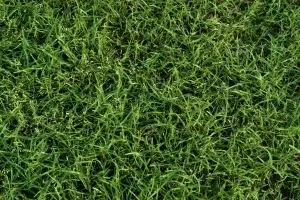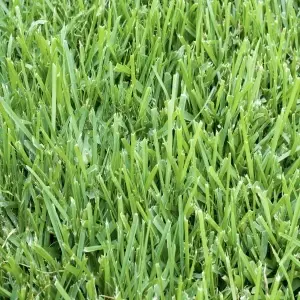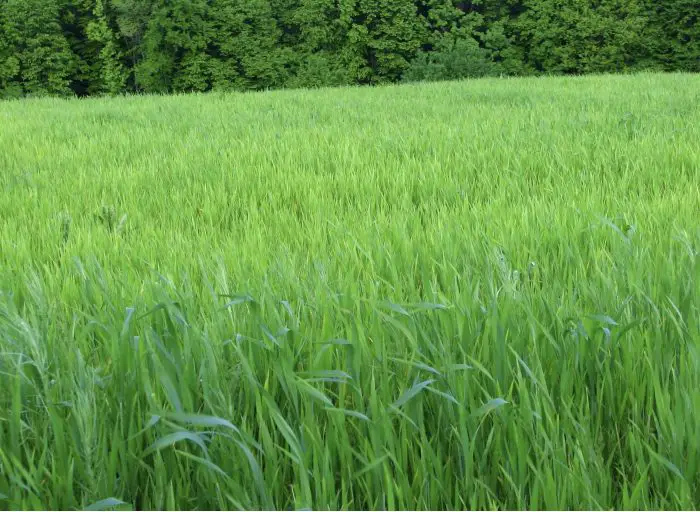Bermuda vs Zoysia grass. Which Grows Better In Texas? Texans, we love our landscapes. We admire those who invest time and money to keep their properties looking beautiful. Take, for example, Texas homeowners, landowners, groundskeepers and property managers.
Each goes the extra mile to give their homes, schools, office complexes, playing fields, golf courses, and military bases a unique look. However, if you wanted extra curb appeal for your property, which would you choose, Bermuda grass vs Zoysia grass? If you want to know which grows better in Texas, keep reading.
What Types Of Grasses Grow In Texas?
Before comparing Bermudagrass versus Zoysiagrass, we must first understand what sets them apart from the other grass species planted and grown here in Texas. The first thing to note, our State does have warm-season grasses and cold-season grasses. Depending on your region, you can choose the types of sod installation you prefer:
Texas Warm-Season Grasses
Bermudagrass
St. Augustine grass
Buffalograss
Centipedegrass
Seashore Paspalum
Texas Cold-Season Grasses
Kentucky Bluegrass
Ryegrass
Tall Fescue
Texas Bluegrass
From this list, only Bermudagrass and Zoysiagrass can grow in all 8 Texas plant hardiness zones. The rest listed have climate or regional limitations. Some require more shade, or will not thrive in low temperatures, or is highly susceptible to invasive weed growth when planted in a high rainfall area.
What is a Plant Hardiness Zone?
Before we move on, let’s briefly touch on what a plant hardiness zone is. The USDA initially set up plant hardiness zones to help landscapers, gardeners, and growers quickly determine what thrives the best in a specific region.
For instance, here in Texas, our hardiness zones start at the top of our State in Dallam county and end in Cameron county to the south. The zones are labeled in numeric-alpha order and are as follows: 6b, 7a, 7b, 8a, 8b, 9a, 9b, and 10a. 6b is our most northern and coldest zone. 10a is our most southern and warmest zone.
What is Bermudagrass?
Bermudagrass, also known as Bermuda Grass, is an area drought tolerant grass. It requires full sun exposure and can handle heavy foot traffic at sports fields and where university grass grows. Should you have a drought, golf courses will benefit most from maintenance hybrid Bermuda. However, your home is better served using common Bermuda Grass rather than a lawn hybrid Bermuda grass.

The Pros & Cons Of Bermuda Grass in Texas
The Pros of Bermuda grass
Bermuda Grass vs. Zoysia Grass. Bermuda Grass, you have ease of growth. It is tolerant of heat and in a drought. As long as the yard has full sun exposure, the grass will grow. Should your lawn experience any damage from high foot traffic, it bounces back quickly. Plus, mowing it very short does not affect the turf.
The Cons of Bermuda grass
Bermudagrass is aggressive, will mix with other grasses, and populate flower beds. It’s less tolerant to cold weather, and once exposed to lower temperatures, goes dormant within a few days. The grass is not shade tolerant, and any shady areas will produce thin patches, and weed growth quickly appears and takes over.
What is Zoysiagrass?
Bermuda vs. Zoysia grass. Which grows better in Texas? Zoysiagrass, also known as Zoysia Grass, is also an area drought tolerant grass with a few exceptions. It does not require identical amounts of nitrogen fertilizer, as will Bermudagrass. Its shade tolerance is light to moderate but not to the level of St. Augustine shade tolerance. To avoid any confusion, Zoysia Augustine grass does not exist and is not a hybrid species. Texas, order your zoysia sod here.

The Pros & Cons Of Zoysia Grass In Texas
The Pros of Zoysia Grass
Zoysia Grass is a low-maintenance perennial grass. It is attractive to look at and comfortable to walk barefoot on. The grass has a soft, delicate texture, and it is slow-growing. It easily resists insects, weeds, and diseases. Also, Zoysia grass is a highly aggressive species that spreads rapidly and will overtake any weeds in its path.
The Cons of Zoysia Grass
Zoysia sod only stays green for about 3-4 months out of the year. Around the middle of Fall, the green hue disappears and remains brown until mid-Spring. When the grass is in its dormant stages, it cannot tolerate heavy foot traffic. It is advisable not to have Zoysia grass planted near or under any shade trees due to its poor shade tolerance with trees.
What Lawn Diseases Affect Bermudagrass and Zoysiagrass?
Numerous varieties of lawn diseases can negatively impact Bermudagrass and Zoysiagrass here in Texas. In the following list, shown are the most common. Next to its common name, the disease’s scientific name is also provided. Bermuda grass vs Zoysia grass – understanding what is right for your home or business is essential.
Large Patch or Brown Patch (Rhizoctonia solani)
You will notice large, irregular to circular patches several feet in diameter. These patches may sometimes have a brown to gray smoke ring at the edge of the circular pattern. Brown Patch is most active on the cool‐season grasses in late spring through mid‐summer, while it is most active on the warm‐season turfgrasses primarily in the fall months.
Leaf Spots (Bipolaris spp., Exserohilum spp.)
Leaf Spots are identified by elongated circular lesions (spots) with gray to tan centers and purplish to brown margins. Leaves will turn tan to straw-colored if crown rot develops. Species of Bipolaris and Exserohilum cause most diseases and usually occur in warm‐season grasses.
Fairy Ring (Agaricus spp., and others)
The Fairy Ring disease appears as rings of dark green grass surrounding dead or light‐colored grass and feeds on organic matter. Most of these fungi will produce mushrooms (toadstools) or even puffballs. The brown or dead grass ring is caused by lowering the soil moisture where the fungus is concentrated. Control is manageable but challenging.
Dollar Spot (Sclerotinia homoeocarpa)
Dollar Spot is a disease that is common in both warm‐ and cool‐season turfgrass species. Small 1 to 2-inch areas in the lawn with distinct straw‐ to tan‐colored sunken spots are noticeable in closely mowed lawns. One can find white to tan banding of leaf blades on the perimeter of the patch. In severe cases, spots may coalesce and become large irregularly shaped.
Powdery Mildew (Blumeria graminis)
Affected areas will have fine, white powdery, or dusty patches of fungal growth on leaves, leaf sheaths, and stems. Older leaves are usually more infected than younger leaves. When heavily infected, the entire leaf may turn yellow, then brown as leaves begin to die. White powdery fungal growth will also affect Bermudagrasses, Zoysiagrasses, and their cultivars.
Spring Dead Spot (Ophiosphaerella agrostis)
Symptoms for Spring Dead Spot include sunken circular patches 1 to 3 feet in diameter. These open patches will show up in the lawn as it begins greening up during the Spring months. While symptoms appear in the spring, the activity of the disease occurs in the previous late‐ summer to fall period. Excess applications of nitrogen fertilizer, heavy thatch layers, and compacted soils will encourage this activity.
In most cases, those in control of a property can prevent plant diseases with proper and ongoing lawn care. Depending on your region, you can choose the types of sod installation you prefer and request help from a professional on how to water turf grass seed. Bermuda grass vs Zoysia grass. Making the right choice of lawn for you is essential.
